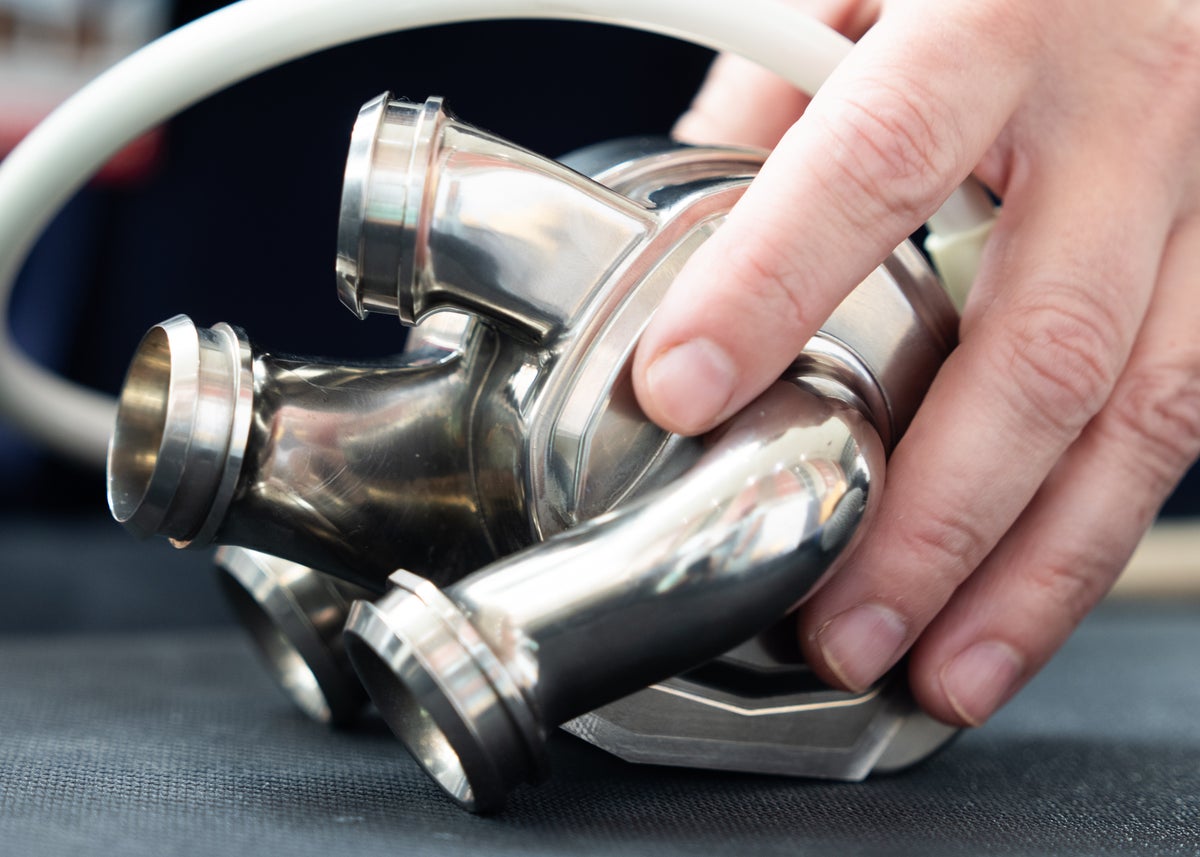Man Survives with Titanium Heart for 100 Days—A World First
Titanium hearts could serve as a stopgap for people with heart failure who are waiting for a donor organ
The BiVACOR is a total heart replacement made of titanium.
An Australian man in his forties has become the first person in the world to leave hospital with an artificial heart made of titanium. The device is used as a stopgap for people with heart failure who are waiting for a donor heart, and previous recipients of this type of artificial heart had remained in US hospitals while it was in place.
The man lived with the device for more than three months until he underwent surgery to receive a donated human heart. The man is recovering well, according to a statement from St Vincent’s Hospital in Sydney, Australia, where the operations were conducted.The Australian is the sixth person globally to receive the device, known as BiVACOR, but the first to live with it for more than a month.
“This is certainly an important development in the field,” says Julian Smith, a cardiac surgeon at the Victorian Heart Institute at Monash University in Melbourne, Australia.
If you’re enjoying this article, consider supporting our award-winning journalism by subscribing. By purchasing a subscription you are helping to ensure the future of impactful stories about the discoveries and ideas shaping our world today.
“It is incredibly innovative,” says Sarah Aitken, a vascular surgeon at the University of Sydney, but she adds that there are still many unanswered questions about the level of function that people with it can achieve and the ultimate cost of the device. “This kind of research is really challenging to do because it is very expensive” and the surgery involved is very high-risk, says Aitken.
BiVACOR was invented by biomedical engineer Daniel Timms, who founded a company named after the device, with offices in Huntington Beach, California and Southport, Australia.
The device is a total heart replacement and works as a continuous pump in which a magnetically suspended rotor propels blood in regular pulses throughout the body. A cord tunnelled under the skin connects the device to an external, portable controller that runs on batteries by day and can be plugged into the mains at night.
Many mechanical heart devices support the left side of the heart, and typically work by pooling blood in a sack, which flexes some 35 million times a year to pump blood. But these devices have many parts and often suffer failures. BiVACOR, which only has one moving part, will in theory experience fewer problems of mechanical wear, says Rogers.
The Australian recipient of BiVACOR had severe heart failure, and received the titanium device in a six-hour operation in November. In February, he was discharged from hospital, stayed in a residence close by and led a relatively normal life. In March, he received a donor heart.
In the US trial led by Rogers, five men in their mid-forties to mid-forties received an earlier version of the BiVACOR device last year. The device sustained these people for up to a month in hospital but was not designed to support them at home. All five individuals were later discharged with donor hearts. Rogers plans to present the results at a scientific meeting in April.
Since then, the BiVACOR team has improved the device to reduce the risk of failure, says William Cohn, a heart surgeon at the Texas Heart Institute and chief medical officer at BiVACOR.
The US Food and Drug Administration (FDA) has approved expanding the trial to another 15 individuals. Aitken says there are still a lot of steps “before this becomes the kind of treatment the general public would be able to access”.
In February, the FDA also approved the first trial for pig-organ transplants, another contender technology to help address the global shortage of donor organs.
This article is reproduced with permission and was first published on March 13, 2025.
Smriti Mallapaty is a senior reporter at Nature.
First published in 1869, Nature is the world’s leading multidisciplinary science journal. Nature publishes the finest peer-reviewed research that drives ground-breaking discovery, and is read by thought-leaders and decision-makers around the world.
Source: www.scientificamerican.com
